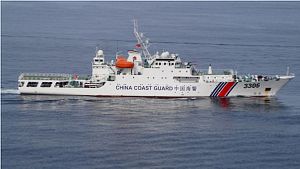This week, China’s defense ministry confirmed that Beijing was set to hold military drills with Malaysia and Thailand. The development spotlights China’s efforts to boost security ties with the two Southeast Asian states as part of their wider relationships even amid lingering concerns about aspects of Beijing’s behavior in the region.
Over the past few years, we have seen China strengthen defense ties with a number of key Asian states as part of their overall relationships across several realms including exercises. Indeed, one of the examples of this will be in full view again next week with the holding of the second phase of the ASEAN-China Maritime Exercise officially scheduled for October 22-29 (See: “What’s Behind the New ASEAN-China Maritime Exercise?”).
A case in point on the exercise side is China’s exercises with Malaysia, which have been held annually since 2014 under the banner of Peace and Friendship. While China has such drills with other countries in Southeast Asia as well, Malaysia has attracted more attention in recent months in particular due to the shock election win by the opposition in May that has brought the country’s longest serving premier Mahathir Mohamad back to power and raised the prospect of an adjustment of the country’s approach towards China (See: “What Does Mahathir’s Return Mean for Malaysia’s Foreign Policy?”).
This week, Beijing’s efforts to boost security ties with Southeast Asian states was in the spotlight with the announcement of a new joint drill between China, Malaysia, and Thailand – the first known trilateral military activity of its kind with both countries even though China does have exercises with both. According to China’s defense ministry, China will send 692 officers and soldiers, three destroyers, two shipboard helicopters, three Ilyushin IL-76 heavy transports and four vehicles to participate in the joint military exercise under the banner of “Peace and Friendship-2018” from October 20 to 29.
While it was not officially characterized as such, the exercise as outlined effectively constitutes part of an ongoing expansion of the China-Malaysia exercise series. It also represents nascent trilaterization in China’s activities with Asian states in this respect, even though Chinese defense officials have privately acknowledged that aspects of this have thus far been moving along much slower than Beijing would like.
More broadly, Beijing appears keen to continue to cast these exercises as being not just part of its efforts to further ties with Southeast Asian states in the security realm, but also to boost wider regional peace and stability. The defense ministry statement stressed that in addition to strengthening cooperation and enhancing joint ability to respond to various security threats, this was also designed to demonstrate the “common will” to maintain “peace and stability in the South China Sea region.”
To be sure, we will have to await further specifics and the carrying out of the exercise before assessing its true significance. As of now, specifics, including the interactions held as part of the exercise, the level of participation from Malaysia and Thailand, and even the specific geographic areas where aspects of the drills will take place (beyond “two states in Malaysia” and “offshore areas”) remain unclear.
More broadly, as I have noted before with respect to such exercises, any true assessment of progress needs to be seen less in terms of each individual engagement but the evolution of the wider defense relationships over the course of several years as well as the broader regional conditions that can facilitate or inhibit collaboration. The exercise announced this week suggests that in spite of lingering uncertainties about some of China’s activities in the region and other obstacles, certain elements of security ties are continuing to be advanced between Beijing and Southeast Asian states.

































